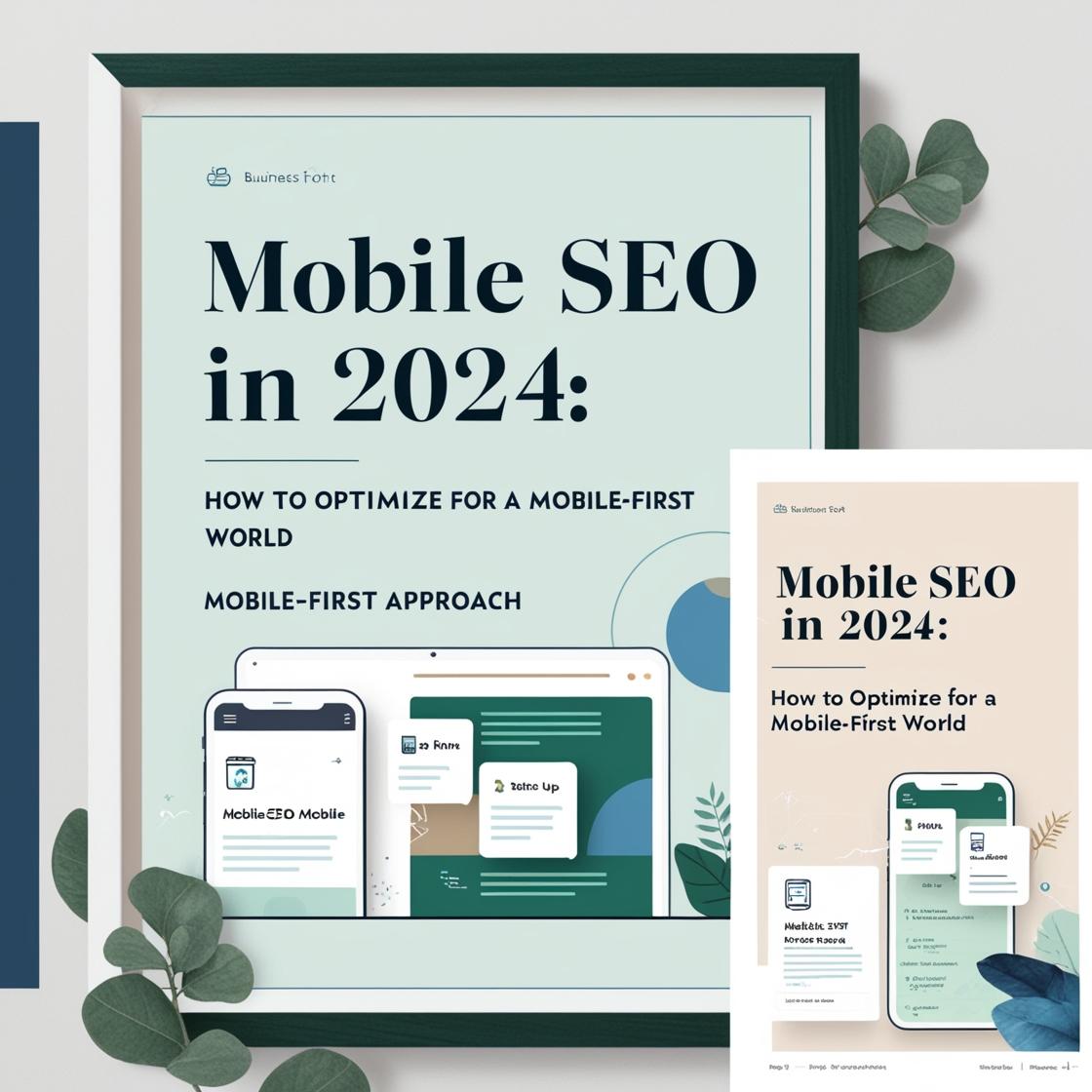
Mobile SEO will become increasingly important for search engine rankings in 2024. Google now indexes mobile content first. This means Google ranks and indexes your site’s mobile version higher. Meeting mobile consumers’ needs is now essential.
We explain how to make your site mobile-friendly and SEO-optimized for the mobile-first world of 2024.
Why Mobile SEO Matters in 2024
Since smartphones and tablets have become popular, people want websites to load quickly on their phones. Mobile optimization issues impact user experience and search engine rankings. Mobile SEO optimizes your website’s load times and design for mobile devices to maximize user experience and search exposure.
A Comprehensive Guide to Google’s Mobile-First Indexing
- Google currently ranks websites based on their mobile versions after adopting mobile-first indexing in 2018.
- If your site isn’t mobile-friendly, rankings and traffic will suffer.
- Mobile sites are crawled and indexed first by Google.
- Desktop ranking is vital, but mobile ranking is more key than ever.
In 2024, mobile optimization will focus on responsiveness, speed, and content delivery for smaller screens.
For Mobile SEO, What Matters Most?
Mobile SEO improves user experience and search engine ranking by simplifying content.
1. Mobile Page Performance
Page speed is crucial for search engine rankings, especially on mobile devices. Since people expect websites to load in seconds, slow load times increase bounce rates and hurt rankings.
- Google PageSpeed Insights detects mobile performance concerns.
- Optimization by compressing photos reduces file size without affecting quality.
- Enable browser caching for faster page loading for returning users.
2. Responsive Web Design
Mobile SEO relies on responsive design. The website layout will automatically change to the user device screen. Mobile- and desktop-friendly designs are essential for high search engine rankings in 2024.
- Flexible grids and layouts let your website dynamically resize images and content to fit multiple screen widths.
- Use font sizes that fit smaller screens and buttons that are easy to tap.
- Avoid obnoxious pop-ups: Google penalizes websites that upset mobile users.
3. Mobile-optimized Pages
Google-backed AMP helps construct fast-loading mobile pages. AMP slims down your website by removing unnecessary HTML, CSS, and JavaScript.
- Web pages designed for AMP load faster, boosting SEO and user experience.
- Ideal for content-heavy websites like news sites, blogs, and publishers.
4. Mobile-Optimized Navigation
Navigation is crucial to smartphone usability. Mobile devices are small, so a simple navigation system is essential for finding information.
- Use a simple menu: Mobile users like short menus.
- Reduce steps to key pages, like product details or contact forms.
- Ensure clear and concise link text: Check that users can see link destinations.
5. Mobile-Friendly Content
To maximize mobile user experience, modify your content for smaller screens. The structure and duration of your content must be adjusted.
- Short paragraphs and bullet points help mobile users read material quickly.
- Optimize headlines by being brief and engaging.
- Use images wisely: Don’t overuse graphics and videos as they slow page loads.
6. Make Your Site Voice-Activated
Voice search is growing as more people use smartphones and smart speakers for information. Use conversational keywords and natural language to improve your content for voice search.
- Use long-tail keywords to match how people communicate.
- Create FAQ sections for common voice queries.
- Optimize for local SEO since most voice searches are location-based.
Mobile-Focused Content Strategy

Mobile-first content is created and organized for mobile consumers from the start, rather than transferring desktop content to mobile.
- Limit paragraphs and wordiness for mobile-friendly content.
- Prioritize key details by placing them at the top of your page.
- Engage mobile users with scannable content.
Mobile Structured Data
Structured data helps search engines index your site and makes it eligible for rich snippets.
- Schema markup can boost mobile search results for star ratings, event times, and prices.
- Optimizing for featured snippets increases visibility and interaction rates.
KPIs for Mobile SEO
Pay attention to these key factors to measure mobile SEO success:
- Mobile traffic: Use Google Analytics to track visitors.
- Bounce rate: A high mobile bounce rate indicates slow load times or poor usability.
- Page speed: Regularly check load speeds with tools like GTmetrix or Google PageSpeed Insights.
- Mobile rankings: Track mobile keywords using SEMrush or Ahrefs.
Avoid These Mobile SEO Mistakes
- Neglecting page speed: Slow-loading sites lose visitors and harm rankings.
- Ignoring responsive design: Non-responsive sites provide a poor mobile experience.
- Blocking resources: Ensure CSS and JavaScript files are crawlable by Google.
In Summary
To maintain a competitive search ranking in 2024, optimize your website for mobile-first environments and focus on mobile SEO. Make your mobile pages fast, use responsive design, and optimize your content for mobile devices to satisfy users and search engines. As mobile-first indexing becomes the standard, mobile-optimized websites will gain visibility, traffic, and success.
